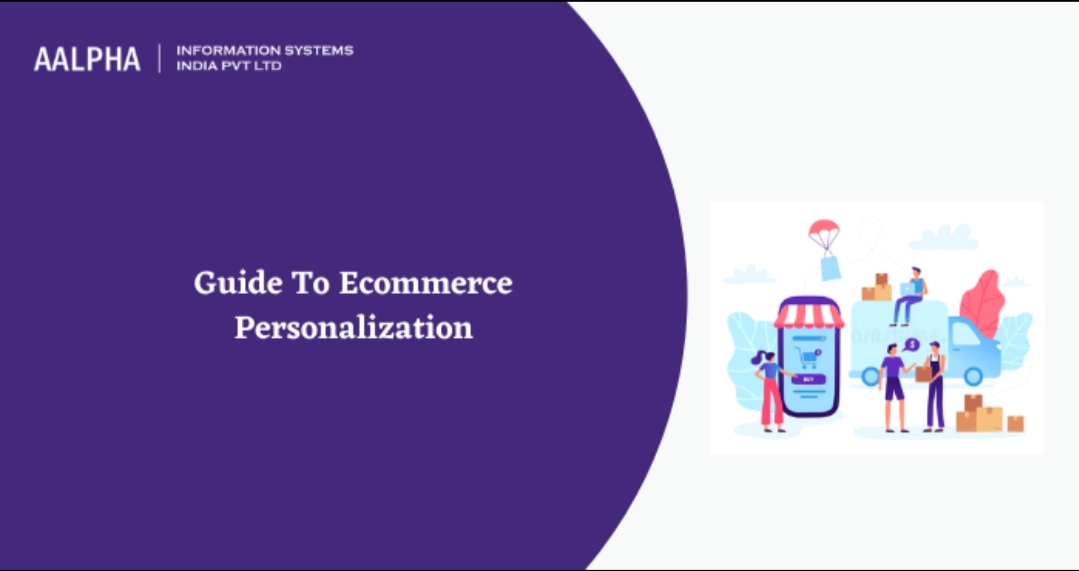

For a long time, eCommerce has been on the lookout for the customization holy grail – a consistent, cross-channel experience that adjusts to consumer requirements and objectives in real-time.
The good news is that these technologies have come for eCommerce.
The bad news is that the sheer number of these technologies, each of which offers a varying degree of customization, leaves it unclear what it means to create customized user experiences in eCommerce and how to do it.
eCommerce personalization is the practice of dynamically displaying information, product suggestions, and special offers on eCommerce websites based on past actions, browsing activity, purchase history, demographics, and other personal data.
Personalization is becoming more essential for retailers looking to improve engagement and repeat purchases, revenue, and conversion.
It manifests itself in various ways—from customized product suggestions on a retailer’s homepage or product detail page to cart abandonment marketing emails to onboarding quizzes that give customers a customized showroom of goods.
The increasing availability of artificial intelligence (AI)/machine learning has increased Personalization.
Machines can process data quickly, enabling real-time improvements and scalability. Individualized, user-oriented buying experiences may be created using collected and processed data.
We can provide real-time assistance to customers by integrating intelligence into the user experience.
Assume a transportation firm creates an app that guides public transit. Algorithms can detect if a user is walking, biking, or driving and recalculate the route accordingly.
For businesses that rely heavily on content, intelligence may help identify knowledge gaps that visitors seek. If a financial institution sees a surge in visitors seeking information on automating investments, this may help content creators’ priorities topics of relevance to actual customers. They can be found quickly utilizing natural language processing and machine learning, without hours of human work going through hundreds of search terms to find patterns.
Customization is difficult for digital companies since no one approach defines it, and each technology class has its own set of constraints. And no one method covers modification.
There are numerous technologies involved, and determining how much, or how little, each will be utilized requires a specific formula.
The table below highlights some of the most often used B2C and B2B eCommerce technologies, each of which falls somewhere along the customization spectrum. We need to combine these technologies to build an intelligent system that responds to user intent.
First, you must understand your visitors to personalize their experience across all these technologies.
Personalization begins with a thorough understanding of each customer’s needs. It is satisfying that demand requires a combination of the appropriate technology and the ability to utilize it.
Whether a new visitor or a returning client, you may glean information about why they came to your site by examining how they arrived. If you can quickly determine their purpose, you can reduce their customer journey and improve their experience.
Are they the result of a social media advertisement? Did they do a search engine query for a specific product or service? Were you discovered because of a news article? If you’re fortunate enough to have a known visitor, who may have made a purchase or filled out a form, you may show similar products or information.
The lack of personalized search represents a major missed opportunity since searchers convert at a rate 1.8 times that of non-searchers. The search box is the most important element on any website.
Unfortunately, many modern websites search tools priorities keywords over context.
Searching may be difficult. Spelling mistakes, wide terms, and differences in how people describe the same thing may all affect search results.
This distinguishes stupid from intelligent search. Many marketing tools still just look for keywords, a recipe for failure.
Like a car salesman in a showroom, you may virtually follow your customers while they browse your site.
A good salesman catches up on indications regarding the client’s preferences for cars, color, price range, and urgency. He may then show them a car that fits their needs based on the dealership’s inventory.
To accomplish this online, you can do something that car dealers can’t: remain invisible while transacting.
Making this work requires letting machine learning evaluate all that data and comparing it to your inventory in real-time.
By detecting similarities in previous behavior or connecting consumers with one another, machine learning may not only assist people navigate more quickly, but it may also provide alternatives that a person would have missed otherwise.
Recognize where and how you want to customize your site’s visitors’ experience. This choice should also be taken considering the areas where customization will have the most significant effect on revenue.
Research the various eCommerce customization technologies and tools available and choose a few to begin started.

© 2017 All rights reserved.